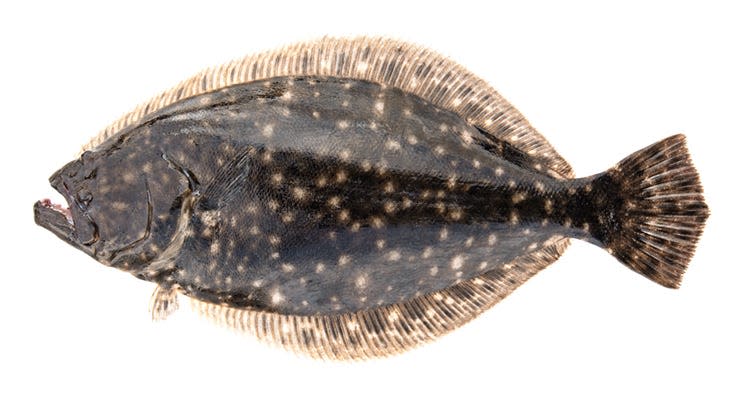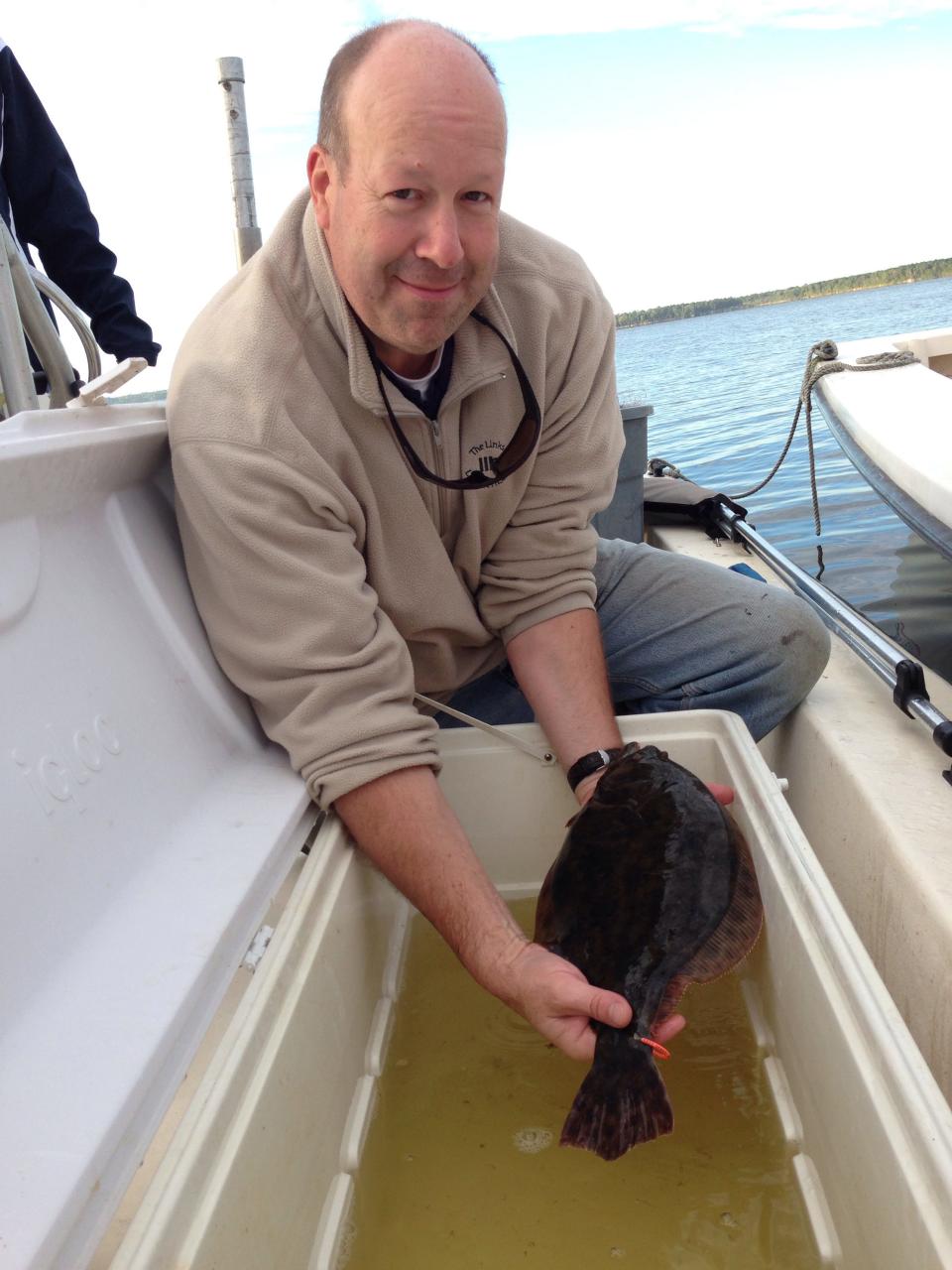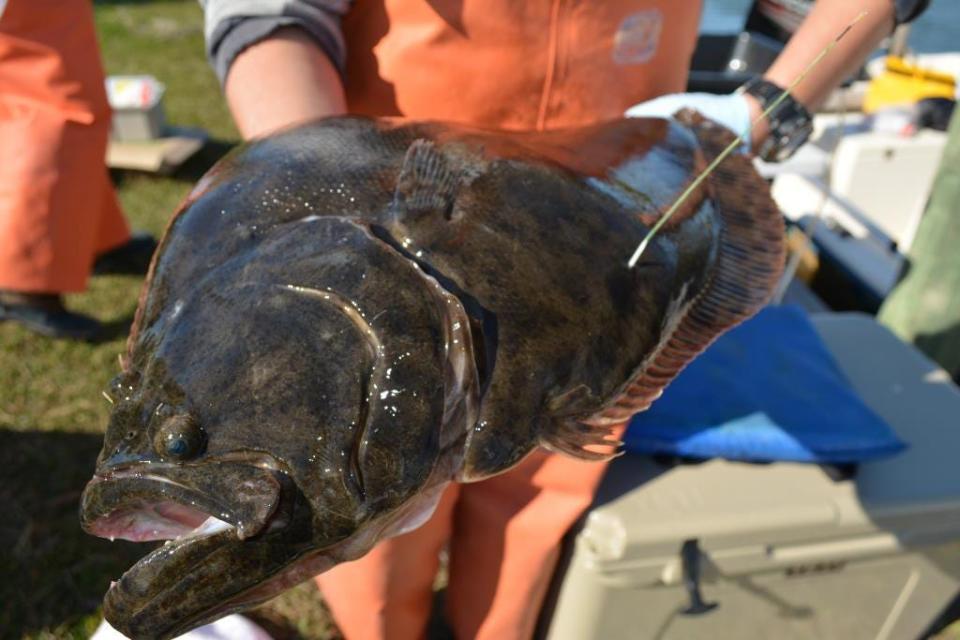As flounder numbers flounder, NC fishermen stew over short recreational season

A two-week fishing season might not sound very long.
But for North Carolina's recreational flounder fishermen, it's better than nothing for arguably the most popular and traditional coastal Tar Heel State fish.
"It's a very iconic fishery," said Scott Baker, a fisheries specialist with N.C. Sea Grant. "It's a good-eating fish with a mild taste, and that helps make it very popular. Plus, people like to catch it, and you don't need expensive gear or a fancy boat to do that."
But the flatfish has been an increasingly scarce option for local and visiting anglers in recent years.
The N.C. Division of Marine Fisheries intends to open the 2023 recreational flounder season at 12:01 a.m. on Sept. 15 and close it at midnight on Sept. 29.
More: North Carolina fishermen will have a chance to hook flounder for 2 weeks. Here's what to know
Provisions for both the recreational hook-and-line and gig fisheries include a limit of one fish per person, per day, with the flounder having to be at least 15 inches long from the tip of the snout to the tip of the tail.
The state's move continues a series of steps that regulators hope will help the struggling fishery rebound, although the moves have frustrated local anglers who never had to deal with a closed flounder season until 2019 and watch neighboring states adopt much less stringent rules. Among the responses to the restrictions on the fishery, which many recreational fishermen see as heavy handed, has been a lawsuit filed by the Coastal Conservation Association of North Carolina alleging the state has mismanaged its coastal fisheries, including flounder.
How did we get here?
In short, overfishing.
"The rate of exploitation throughout the history of the fishery has been too high, and most of that was commercial," said Dr. Fred Scharf, a fisheries biologist at the University of North Carolina Wilmington (UNCW).
As steps in the early 2000s were put into place to limit offshore flounder fishing, the commercial fishery moved mostly into inland waters.
But the flounder fishery in North Carolina's estuaries was already facing its own pressures, this time from recreational fishermen, Scharf said.

"We've seen a tremendous increase in our coastal population in recent decades, and that's led to an increase in recreational pressure on a fishery that was already overfished on the commercial side," he said.
The result, aside from finger pointing between the commercial and recreational fishermen on whose at fault for the state's floundering flounder population, has been dramatic catch cuts to both fisheries imposed by state regulators in recent years.
What about climate change?
Scharf said the science around flounders is still a developing field, including how much "mixing" goes on offshore between flounders that reside in other state's coastal waters for most of the year.
“We’ve learned a ton in two decades," he said. "But there are still a lot of questions, primarily related to the recruitment issue, because it takes a lot of data to show you have a recruitment problem."
Among the issues researchers are looking into is what impact climate change and warming sea temperatures, fueled by humans pumping enormous amounts of heat-trapping greenhouse gases into the atmosphere, could be having on the flounder fishery.

Scharf said a flounder's sex is determined by water temperatures. Since juvenile fish hang out in shallow, inland estuary waters, warmer water temperatures likely trigger more of the fish to be male. Beyond messing up sex ratios, Scharf said that could be a growing problem because female flounders grow bigger than males.
"The females are the driver for the fishery, both commercial and recreational," he said.
Scharf said flounder, like many other fish species, also spawn offshore in deeper waters, where there are cooler water temperatures. But as the oceans warm, scientists worry that could have an impact on larval survival rates and, in turn, the recruitment of flounder back into coastal waters.
"That could mean a lower state of stock productivity," Scharf said.
What does this mean for recreational fishermen?
For the past two years, recreational fishermen have caught more flounder than allowed under North Carolina's recreational quota approved by the marine fisheries commission in the N.C. Southern Flounder Fishery Management Plan Amendment 3. The amendment, adopted in May 2022, called for a 72% reduction in the southern flounder harvest, with both commercial and recreational fisheries seeing dramatic cuts.
In 2022, the state's recreational quota, or total allowable catch (TAC), was 170,655 pounds. But regulators estimated fishermen exceeded this amount by 56,340 pounds. Because North Carolina has to "pay back" any overages in the following year's harvest, the 2023 recreational catch ceiling has been reduced to 114,315 pounds.
During the two-week 2021 flounder season, recreational fishermen caught an estimated 627,000 pounds of flounder − well over the quota of 152,808 pounds.
CHANGING INDUSTRY Aging workforce, changing attitudes among challenges facing NC fishermen
Because discarded fish which die are included in the TAC estimates, state regulators are asking fishermen not to target flounder after they've caught their one fish per day or practice what's called high-grading, where a fishermen holds onto a smallish flounder in the hopes of releasing it after catching a larger fish. They also said fishermen should avoid targeting flounder outside of harvest season.
Marine fisheries spokesperson Tricia Smith said flounder mortality is high in the recreational fishery, with more than 2.79 million flounder discarded in 2022 compared to 70,945 southern flounder that were harvested. More than 60% of the discards occurred outside of the two-week open harvest season, she added.
What about the future for the flounder fishery?
With fishermen's frustrations high and flounder numbers low, at least according to the most recent stock assessments, Scharf and Baker said it's likely going to mean a couple more years of very limited harvests to get the fishery back to where it can be considered healthy.
Scharf said he knows the state's robust management strategies are unpopular, but we need to follow the science if North Carolina wants to have a sustainable fishery in future years.

"It's not an ideal situation," he said of balancing economic, recreational, cultural and even political needs with the hard facts of a struggling fishery in trouble. "But all we can do is put the fish in the best possible position to make more fish, and hopefully that's what we're doing with these measures."
Baker echoed the sentiment.
"If recreational and commercial fishers can make it through these next few years with reduced seasons and quotas, the science suggests that the fishery will rebuild, and be better off because of our efforts," he said.
Reporter Gareth McGrath can be reached at GMcGrath@Gannett.com or @GarethMcGrathSN on Twitter. This story was produced with financial support from 1Earth Fund and the Prentice Foundation. The USA TODAY Network maintains full editorial control of the work.
This article originally appeared on Wilmington StarNews: Struggling flounder numbers mean short NC recreational fishing season

